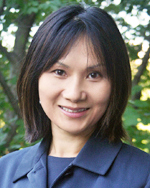
Emphasis
Overall emphasis is on the engineering of novel image-guided interventions to improve outcomes of interventional procedures. In addition, emphasis includes technologies that expand needed procedural access for individuals otherwise excluded by disease characteristics, co-morbidities, and other parameters.
Additional Emphasis
Image-guided interventions may use supporting technologies relevant to other NIBIB-supported program areas, including but not limited to:
- Various imaging technologies
- Biosensors and Physiological Detectors program
- Image Processing and Visual Perception program. Examples include image-guided interventions for non-invasive procedures, minimally invasive procedures, open surgery, and radiation treatment such as:
- guidance for focused ultrasound treatment
- navigation for minimally invasive needle biopsy
- intraprocedural delineation of tumor margins
Note that image-guided interventions may support operator-directed, non-robotic procedures as well as robotic procedures.
Areas of priority include development of real-time or near real-time novel image-guided technologies, with robust procedural direction or a robust receiver operating characteristic curve. In addition, cost-efficient technologies, appropriate for low resource settings, and/ or applicable to multiple types of interventions are strongly encouraged.
Related News
In an effort to greatly expand accessibility, this compact fluorescence-guided surgery system, evaluated in mice, is crafted from cost-effective and off-the-shelf components.
NIBIB-funded researchers are developing an autonomous robot that can perform bowel surgery with minimal assistance from a surgeon. In preclinical models, the robot outperformed expert surgeons when compared head-to-head.


